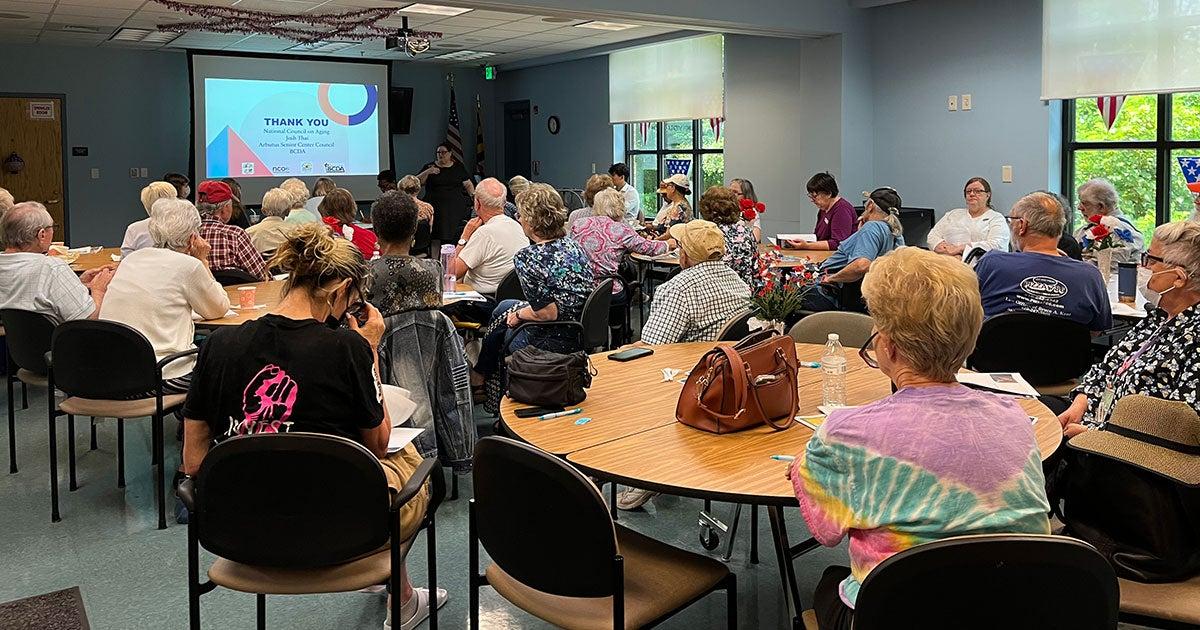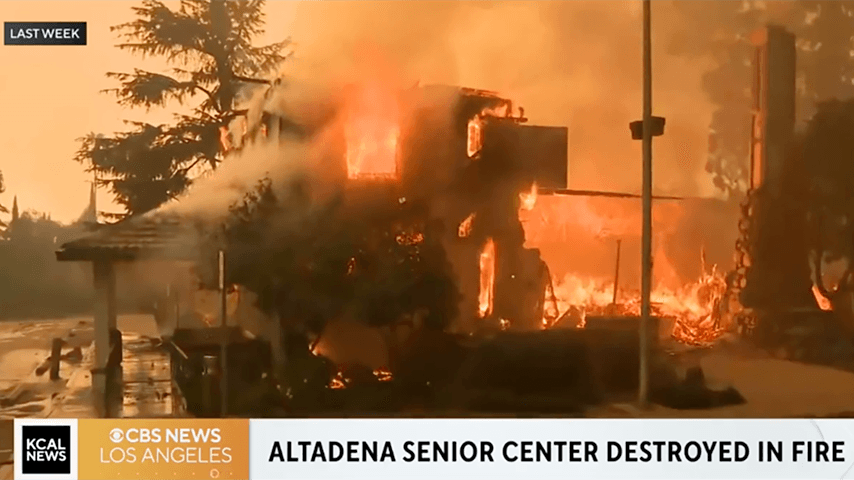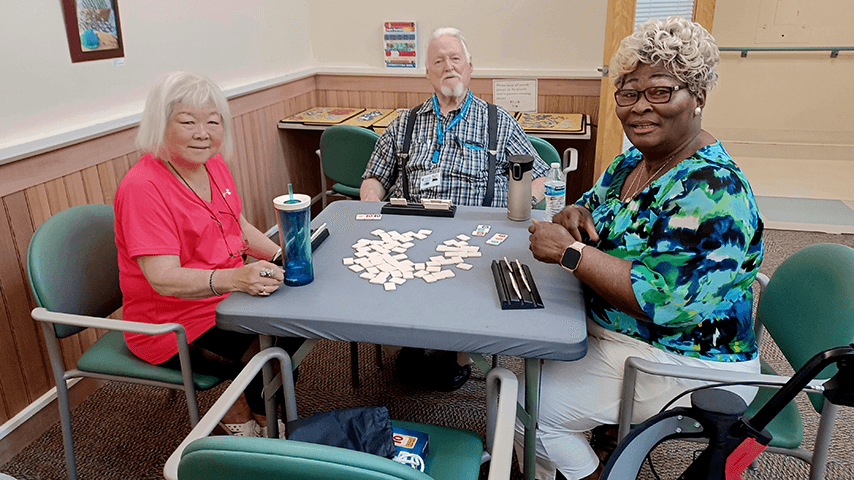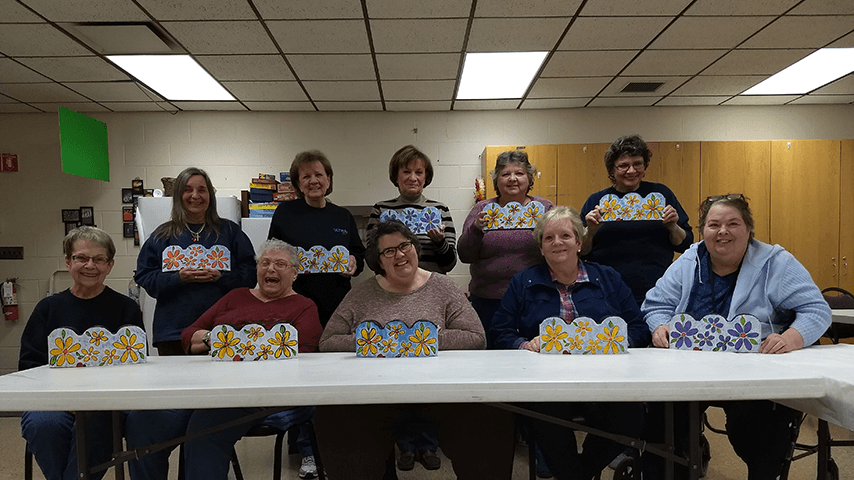Senior Center Spotlight: Good Sam Senior Center Gives Sense of Ownership
7 min read
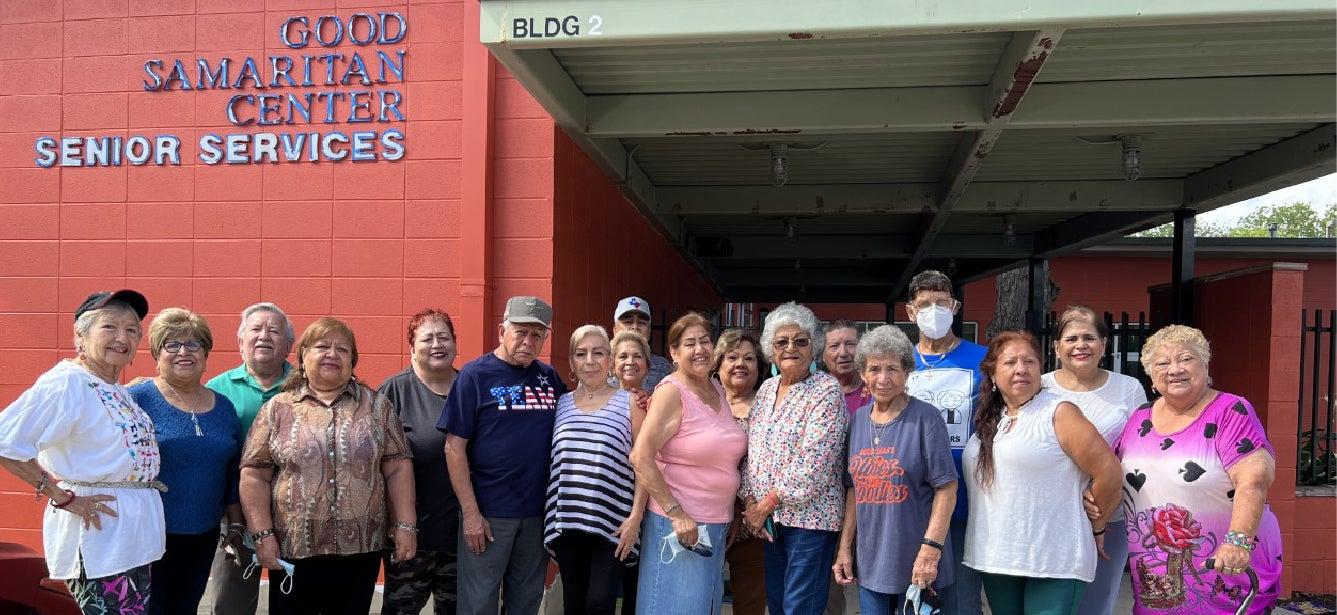
There is an adage in the senior center world that when you have seen one senior center, you have seen one senior center. Each is designed to be a local, trusted hub of information and offer opportunities for social engagement, healthy aging, and economic security.
There are hallmarks of what a senior center should do and be—NCOA's Standards of Excellence provide a framework—and perhaps the most important is that the senior center reflects the people, the culture, and the community that it serves. The Older Americans Act was intentionally designed to provide this kind of local flexibility. This is built on the concept that communities are the best suited to plan and deliver services at a local level.
This is a core foundational principle of the senior center philosophy—that a senior center meets the needs of the community that it serves. The Good Sam Senior Center in San Antonio, Texas, does that well.
Why was the Good Sam Senior Center established?
The Good Sam Senior Center is a program within Good Samaritan Community Services, an agency that is deeply rooted in the Westside of San Antonio. They are committed to addressing pervasive generational poverty with high quality prevention and intervention programs and seem to do that quite well. The agency has a dual generation approach (multi-generation, really) that includes older adults. The staff are professional and passionate.
Founded by the Episcopal Diocese of West Texas in 1951, Good Samaritan Community Services, known as Good Sam, is a non-profit agency that supports youth, individuals, and families in overcoming the impact of economic poverty through programs and services that focus on prevention and intervention. The corporation:
- Was formed under the laws of the state of Texas and the Canons of the Episocopal Diocese of West Texas
- Has a board of directors elected by the Diocese
- Is a neighborhood resource for San Antonio’s Westside community, offering a Child Development Program, Youth Development Program, and Adult and Senior Services Program (this includes the Good Sam Senior Center)
Operating since 2005, the Good Sam Senior Center gives older adults opportunities to enhance self-sufficiency, self-efficacy, physical health, and well-being through its activities and programs. The center provides services including food assistance and emergency referrals, and case management, and they are one of the City of San Antonio’s comprehensive nutrition sites.
In addition to the Good Samaritan Community Services Board of Directors, the senior center has a highly active and committed Site Council comprised of older adults who use the center. The council members clearly have a sense of ownership in the activities of the center.
For context, San Antonio's Westside is an area characterized as very family-oriented and has a lot of churches. There is a high rate of poverty in the area with a historical divestment due to redlining in the 1920’s-40’s.1,2 There are no big employers or industry, and most people are employed in the service industry with many small, family-owned businesses. This results in many not having access to health insurance or other benefits. There is a digital divide in the area with recent studies indicating that less than 50% of households have internet access.3 For older adults, that rate is even higher. It is also a place where people stay—for generations. Several of the staff, including the CEO, were born and raised in the area, left to go to school or work, and returned to the neighborhood with a commitment to making a difference. Good Sam exists to address the generational poverty of the Westside through a multi-generational approach.
What happens at Good Sam Senior Center?
The Good Sam Senior Center is a community gathering place for older adults with programs, services and activities that are planned and implemented in partnership between the staff and a Site Council. While there is only one paid staff person dedicated to the senior center, she is supported by a strong internship program.
Economic security is at the core of the center, and case management services are provided to all participants with each completing an assessment as part of the enrollment process. The center offers a daily hot meal as one of the city’s congregate meal sites. There are also fitness classes, arts and crafts, games and health programs. The center has a strong partnership with the nursing school at the University of Texas at San Antonio, allowing for screenings and health education.
Several members of the senior center's Site Council talked with a great deal of pride about fundraising they have done—craft sales, jewelry sales, crocheted items sold—that support special events like trips to Morgan’s Wonderland and dinners. Site Council members also expressed pride in the neighborhood as a place with a deep culture: a place where their parents raised them and they raised their children and grandchildren.
Indeed, there are many older adults who are raising grandchildren and great grandchildren, and the multi-generational focus of Good Sam is of great benefit. On the day of our recent visit, there was a well-attended game of Loteria in progress. Described as Mexican bingo, winners receive vouchers they can redeem in the center’s clothing room, a well-maintained pantry of used clothing that is very popular with participants and further evidence of the responsiveness of the center to the needs of the community.
Who goes to Good Sam Senior Center?
The senior center serves 140 people annually. While the center is actively marketing to increase engagement, it operates in a city that has 18 senior centers and where many local churches also provide senior services. Good Sam Senior Center is not meant to reach the entire population of San Antonio, but to serve their target population well. They certainly do that.
How has the COVID-19 pandemic impacted Good Sam Senior Center?
The early days of the pandemic, when gathering places like libraries and senior centers were forced to close their doors, was a difficult time for the community. And the fact that Good Sam Senior Center did not offer online versions of previously in-person services acitivities highlights the critical need for equitable access to broadband.
Good Sam Senior Center provided outreach throughout the time that their doors were closed, mostly with phone calls, and provided emergency food assistance. Senior center staff and volunteers were engaged in the vaccination effort. Unlike many centers, they did not host virtual programs. Not online were online programs and services beyond the center's capacity, but, more importantly, given the lack of internet access among older adults in the area, virtual programs would not have been well-received or met the needs of local older adults.
What does modernizing mean for Good Sam Senior Center?
Good Sam is a beloved and effective agency led by professional staff who are mission-driven and passionate about their community. They are committed to high quality programs and data-driven solutions. From the Site Council to the CEO, there is a vested interest in the people of the community. The senior center’s use of the dimensions of well-being as a framework for program development is a good model to promote opportunities.
What’s next for the Good Sam Senior Center?
The Good Sam Center continues to assess and respond to the needs of the community. Every older adult in this country should have access to a senior center so invested in meeting the needs of its community.
Still not a member of the National Institute for Senior Centers? Join today, membership is free.
If your center has engaged in a recent study or assessment, we’d love to hear about it. And if you haven't already, we'd encourage you to join the National Institute of Senior Centers (NISC). Free to all senior centers (and their personnel), NISC supports senior centers with best practices and innovations in programming, as well as networking and training opportunities. Ask for help, leverage NISC resources, or share your successes like the Good Sam Senior Center. Find out how you can become a NISC Affiliate today.
Sources
1. Angela Regalado, Brandon Rodriguez, and Izabella Torres. The History of Redlining in San Antonio. Story Maps. April 14, 2021. Found on the internet at https://storymaps.arcgis.com/stories/aa93a6bf89de449a878694cc43f482db
2. Westside Promise Community Profile. Community Information Now. Prepared for the United Way of Bexar County. August 2017. Found on the internet at https://cinow.info/wp-content/uploads/2017/09/CINow-WPN-Neighborhood-Profile-final.pdf
3. Jeannette E. Garcia. Study confirms vast citywide digital divide. San Antonio Business Journal. June 24, 2020. Found on the internet at https://www.bizjournals.com/sanantonio/news/2020/06/24/survey-confirms-vast-citywide-digital-divide.html

